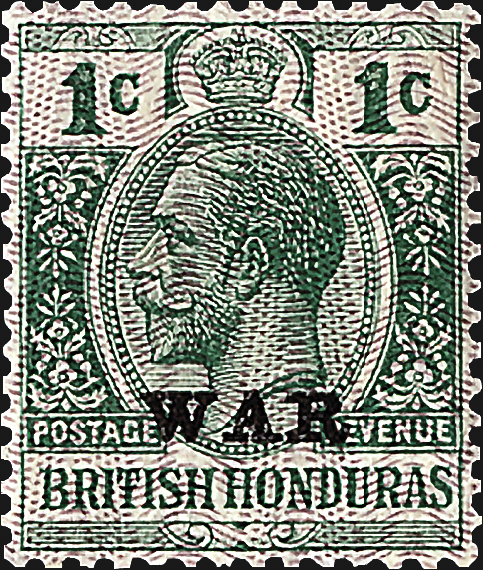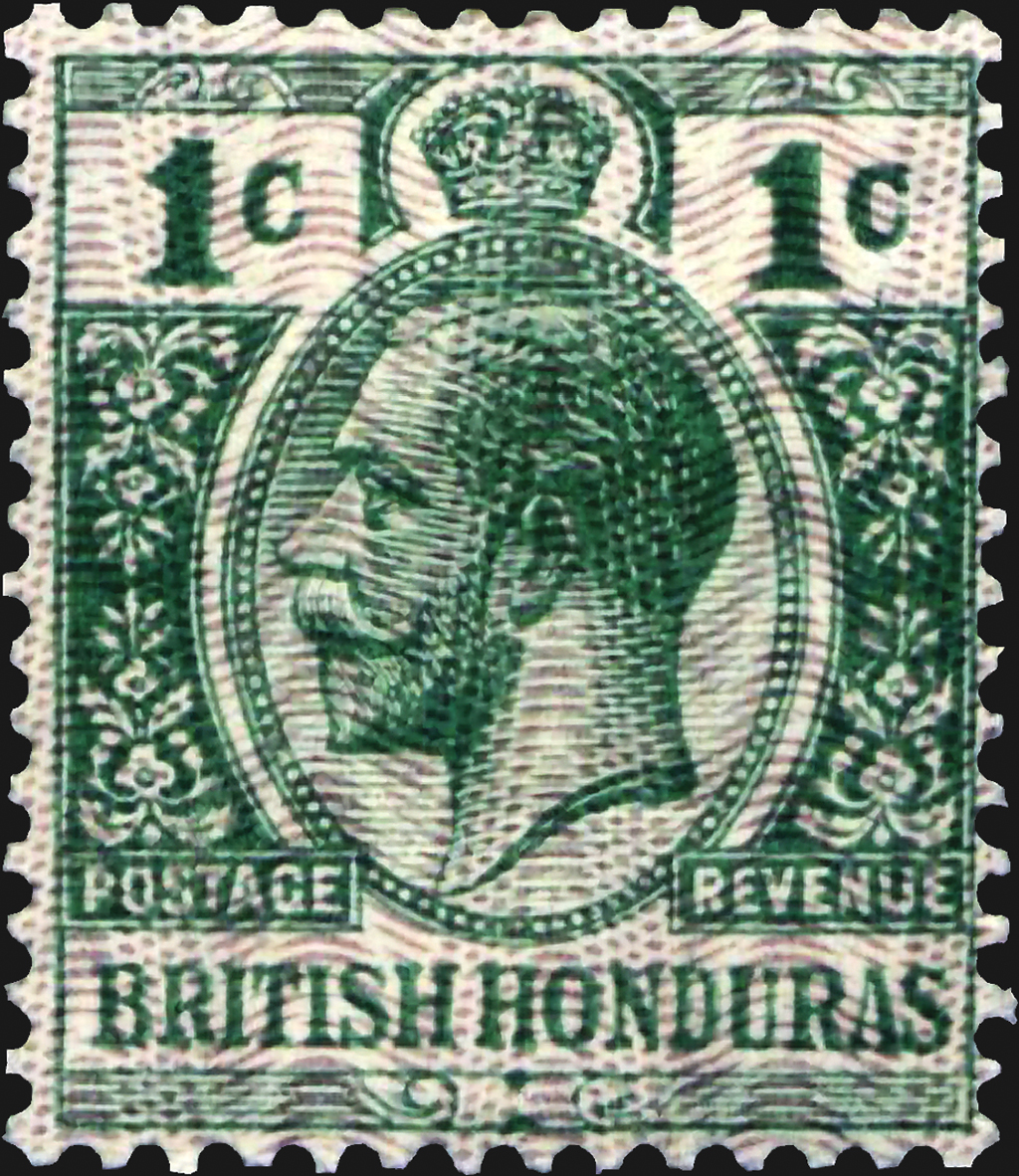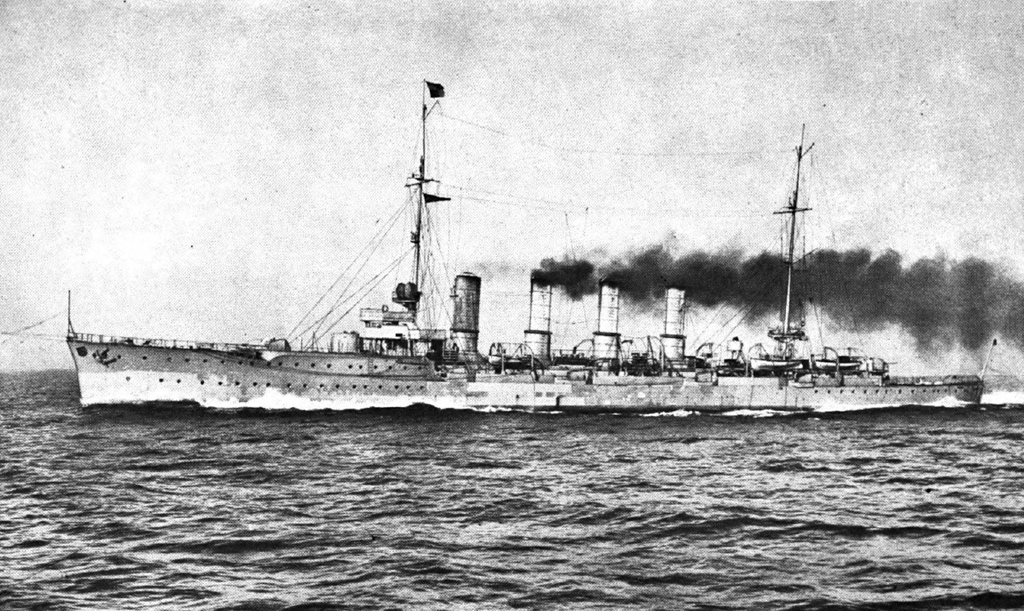World Stamps
British Honduras World War I stamps with moire overprints
The colony of British Honduras (now the nation of Belize) in Central America was very distant from the shell-torn battlefields of Western Europe during the Great War (1914-18), but the effects of the war reached across the seas to create an unusual set of stamps for the colony.
The outbreak of World War I in Europe in 1914 left British Honduras in isolation.
Ocean transport was diverted to vital war material, and available transport dwindled as German U-boats and commerce raiders roamed the Caribbean Sea and the Gulf of Mexico, sinking or capturing Allied merchant ships.
Colonial products such as mahogany and chicle (a tropical sap used to make chewing gum) were a low priority, and few merchant vessels risked calling in British Honduras.
In early 1915, when the colony needed new postage stamps, London’s printing firms were far away across thousands of perilous miles of sea. There were great fears that the new stamp shipment might be captured by a German commerce raider or perhaps even a surfaced U-boat.
To easily identify the stamps, they were overprinted with a pale violet moire pattern. Covered with networks of pale zigzag lines, the stamps were quite distinctive and could be spotted easily.
If the stamps were captured by the Germans, the issue could be invalidated.
By the time the stamps were ready for shipment, matters looked a bit better for the Allies.
The German cruiser SMS Karlsruhe captured or sank 16 Allied ships in the Gulf of Mexico and the Caribbean Sea in 1914. But on the night of Nov. 4, 1914, while on the way to attack shipping bound for Barbados, the SMS Karlsruhe was destroyed by an accidental explosion.
On Dec. 8, 1914, the Germans lost four cruisers and two auxiliary vessels to the Royal Navy at the Battle of the Falklands in the South Atlantic. Although U-boats remained a menace until the end of the war, the German commerce raiders were far less of a worry by early 1915.
The British Honduras stamps shipped from England made it through for distribution to colonial post offices. There were three denominations of new moire-overprinted stamps: a 1¢ green, a 2¢ carmine and a 5¢ ultramarine (Scott 85-87). Each stamp bore a portrait of King George V.
Except for the overprint, these stamps were very similar to previous British Honduras stamps of the same denominations issued in 1913.
The moire overprint can be seen more distinctly on the darkened scan of the 1¢ stamp shown nearby.
In 1916, some of the 1¢ stamps were overprinted “WAR” in black ink (Scott MR1). These stamps paid the postal war tax, which was implemented empire-wide to help pay for the war. The stamp exists with the “WAR” overprint inverted (Scott MR1a).
The moire overprints of British Honduras reside in many a stamp album today as silent reminders that the waves of WWI also rolled through the Caribbean Sea and the Gulf of Mexico.
More from Linns.com:
35 rare 5c China Imperial Dragons found in attic in UK
Many stamp societies make their journals available online
Is this 1999 registered cover commercial or philatelic?
Canada’s Maple Leaf flag celebrates 50th anniversary
Brigham auction March 6-7 offers Admirals
Keep up with all of Linns.com's news and insights by signing up for our free eNewsletters, liking us on Facebook, and following us on Twitter.
MORE RELATED ARTICLES
Headlines
-
US Stamps
Oct 7, 2024, 3 PMMcMurtrie dismissed as APS education director following Sept. 21 arrest
-
US Stamps
Oct 7, 2024, 12 PMVasiliauskas named president of Mystic Stamp Co.
-
US Stamps
Oct 6, 2024, 5 PMApgar souvenir card available
-
US Stamps
Oct 6, 2024, 4 PMFirst Continental Congress and U.N. stamps receive Scott catalog numbers









